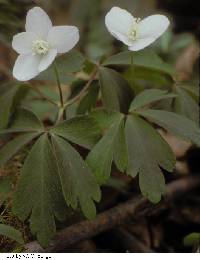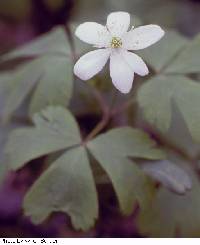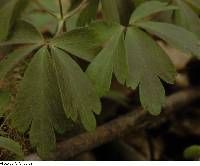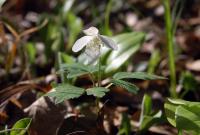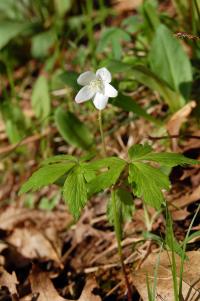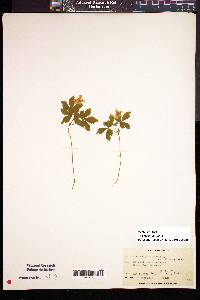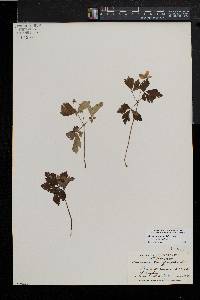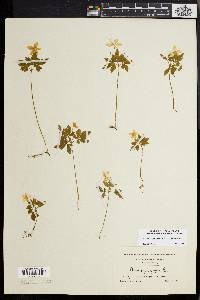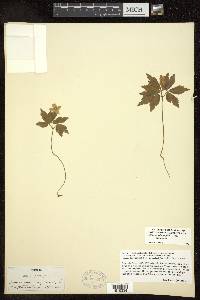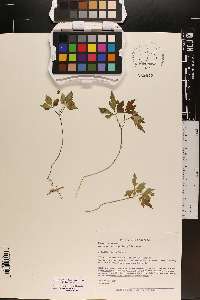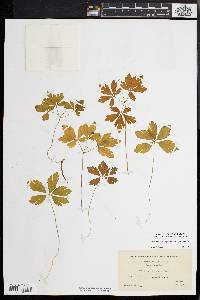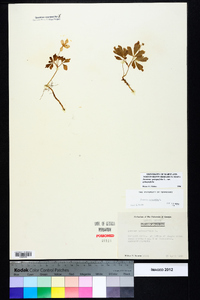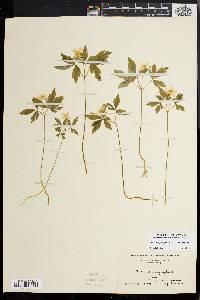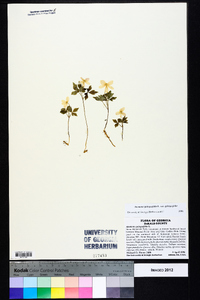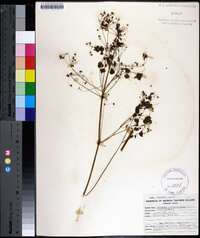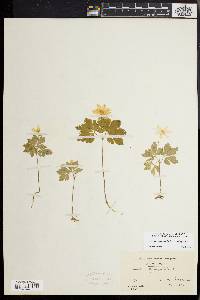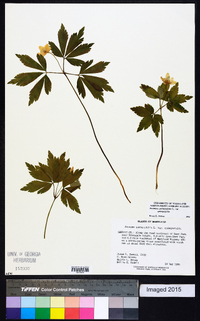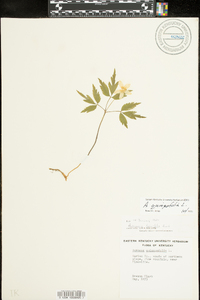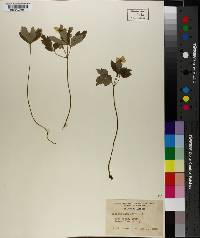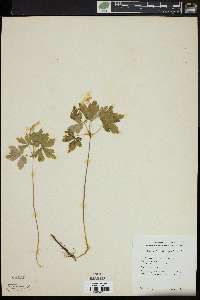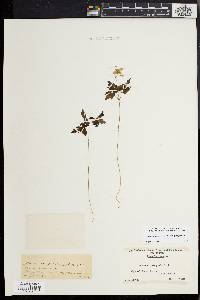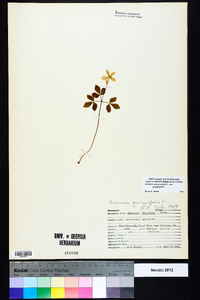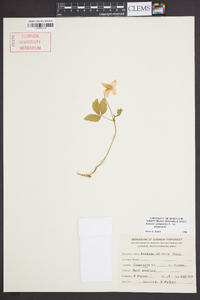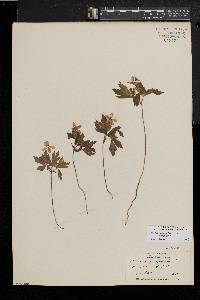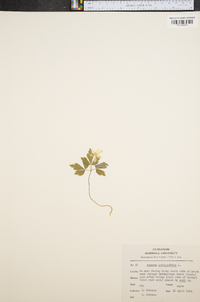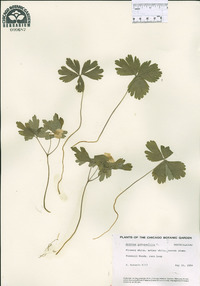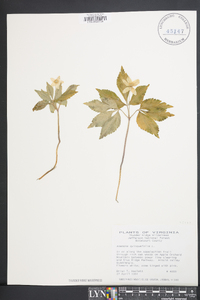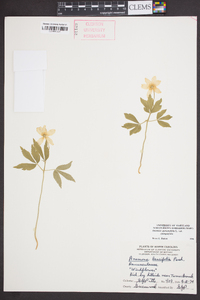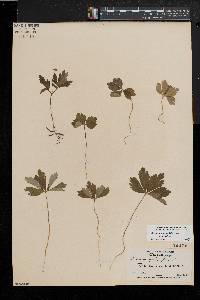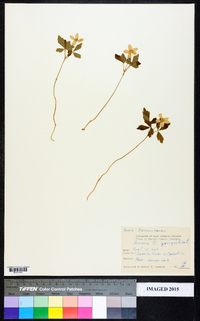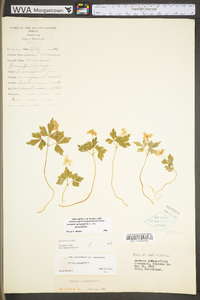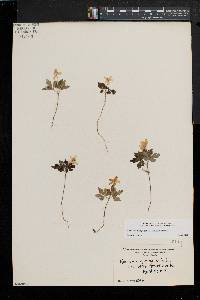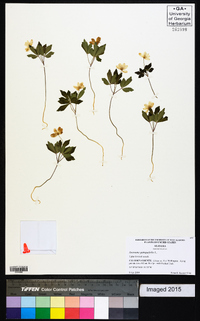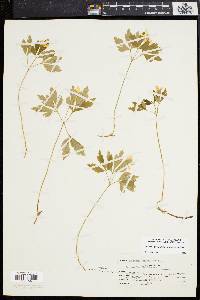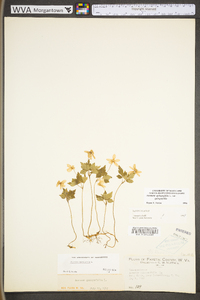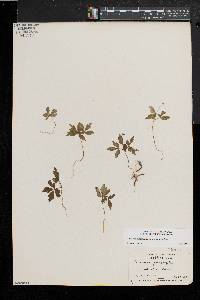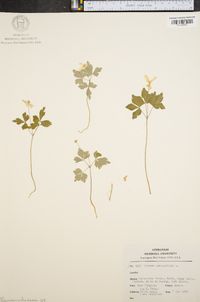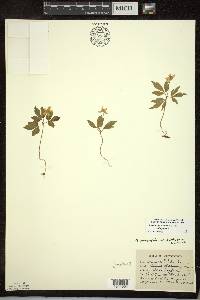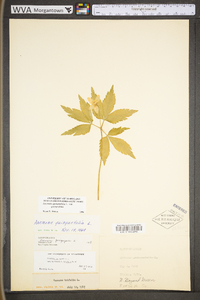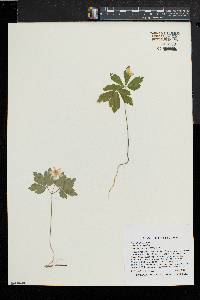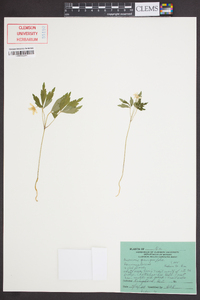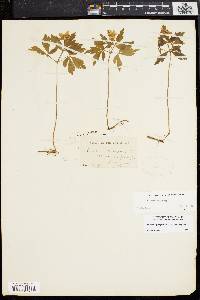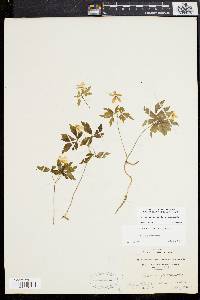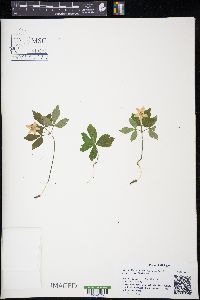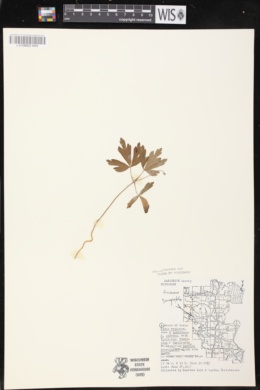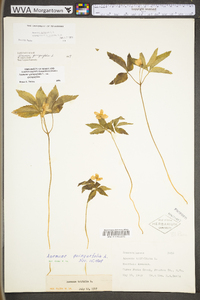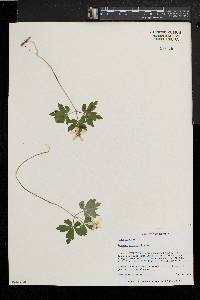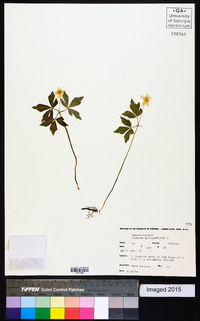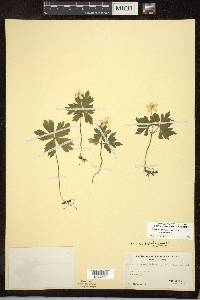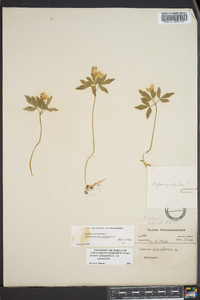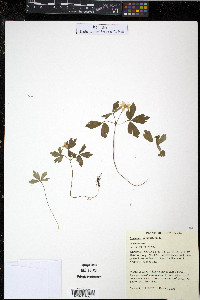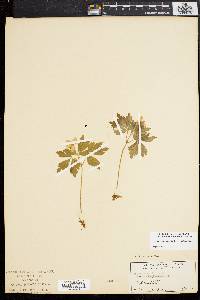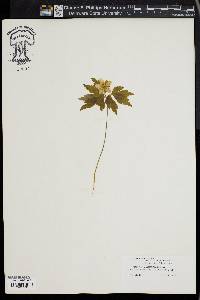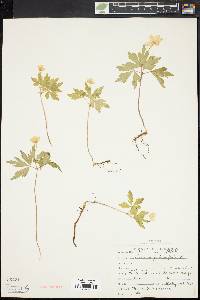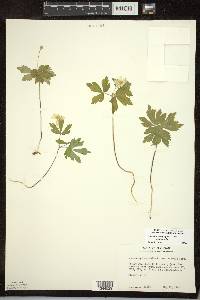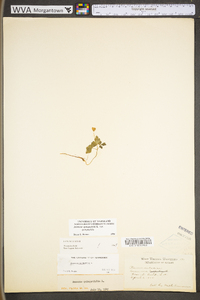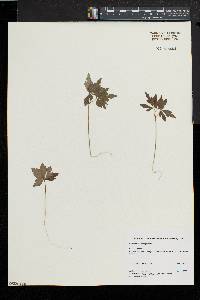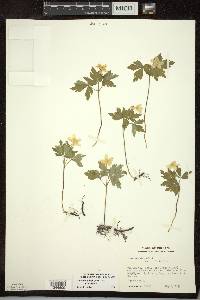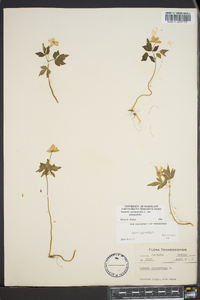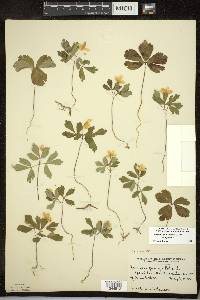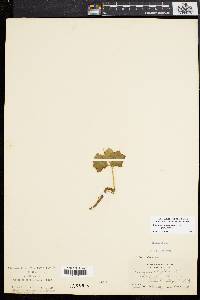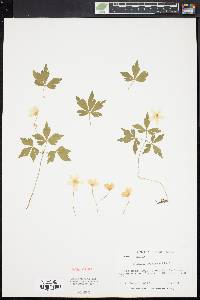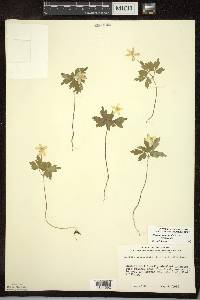Anemone quinquefolia
|
|
|
|
Family: Ranunculaceae
Nightcaps, more...wood anemone
[Anemone quinguefolia, moreAnemone quinquefolia f. rubra J. W. Moore, Anemone quinquifolia , Anemonoides quinquefolia (L.) Holub] |
Aerial shoots 5-30 cm, from rhizomes, rhizomes primarily horizontal. Basal leaves 0-1, ternate; petiole 4-25 cm; terminal leaflet ± sessile, rhombic to oblanceolate or obliquely oblanceolate, 1-4.5 × 1.4-3.7 cm, base narrowly cuneate, margins crenate-serrate, serrate, occasionally dentate or incised on distal 1/3-1/2, apex acuminate to obtuse, surfaces glabrous or puberulous to pilose; lateral leaflets unlobed or 1×-lobed or -parted; ultimate lobes 4-15 mm wide. Inflorescences 1-flowered; peduncle puberulous, villous, or glabrous; involucral bracts 3, 1-tiered, ternate, ±similar to basal leaves, bases distinct; terminal leaflet petiolulate or sessile, rhombic to oblanceolate or obliquely oblanceolate, 1-5(-5.5) × 0.5-3 cm, base narrowly cuneate, margins crenate to serrate, serrate to dentate, occasionally incised on distal 1/3-1/2, apex acuminate to acute, surfaces glabrous or puberulous to pilose; lateral leaflets unlobed or 1×-lobed or -parted, ultimate lobes 5-20 mm wide. Flowers: sepals (4-)5(-6), white, rarely pink, or abaxially white or tinged pink or blue and adaxially white, oblong to ovate, 6-25 × 4-8 mm, glabrous; stamens 30-60. Heads of achenes spheric or nearly so; pedicel 1-6(-8) cm. Achenes: body ellipsoid or ovoid, 2.5-4.5 × 1-1.5 mm, not winged, puberulous or villous; beak straight to curved, rarely recurved, 0.5-2 mm, ±glabrous to sparsely puberulous, not plumose. Anemone quinquefolia and its relatives ( A . grayi , A . lancifolia , A . lyallii , A . oregana , and A . piperi ) are remarkably similar morphologically. Consideration of the sizes of various plant parts, degree of lobing of lateral leaflets, and orientation of the rhizome are particularly critical in distinguishing these species. This species complex also shares close morphologic affinities with both European (e.g., A . nemorosa Linnaeus) and Asian (e.g., A . altaica Fischer ex Ledebour) plants.
Delicate herb mostly 1-2 dm from a slender rhizome; basal lf solitary, long-petioled; lfls 3-5, rhombic to cuneate-obovate, coarsely and unevenly toothed or incised, chiefly above the middle; involucral lvs similar but smaller, the lateral lfls commonly incised on the outer margin, the middle one 2-5 cm, broadest distinctly above the middle, cuneate and entire from the middle to the base; sep mostly 5, white, or reddish beneath, 10-22 mm; achenes fusiform, 3-4.5 mm, short-hirsute; 2n=32. Moist woods; Que. to Man., s. to Md., O., n. Ind., and ne. Io., and in the mts. to n. Ga. Apr.-June. Eastern plants (w. to Ont. and O.) with the stem glabrous below the involucre, are var. quinquefolia. More western plants, with the stem spreading-villous below the involucre, are var. bifolia Farw. (var. interior) Gleason, Henry A. & Cronquist, Arthur J. 1991. Manual of vascular plants of northeastern United States and adjacent Canada. lxxv + 910 pp. ©The New York Botanical Garden. All rights reserved. Used by permission. From Flora of Indiana (1940) by Charles C. Deam Infrequent to frequent or local in rich, moist woods in the northern half of the state. I have no specimens from the southern part although there are reports of it from six southern counties. ...... Indiana Coefficient of Conservatism: C = 7 Wetland Indicator Status: FAC Diagnostic Traits: Plants mostly <20 cm; basal leaf (when present) 3-5 leaflets; leaf-like cauline bracts 3, petiolate; flowers solitary, white to pink; perianth usually of 5 sepals; achenes glabrate. Indiana populations are assigned to var. quinquefolia. |
|
|
|


